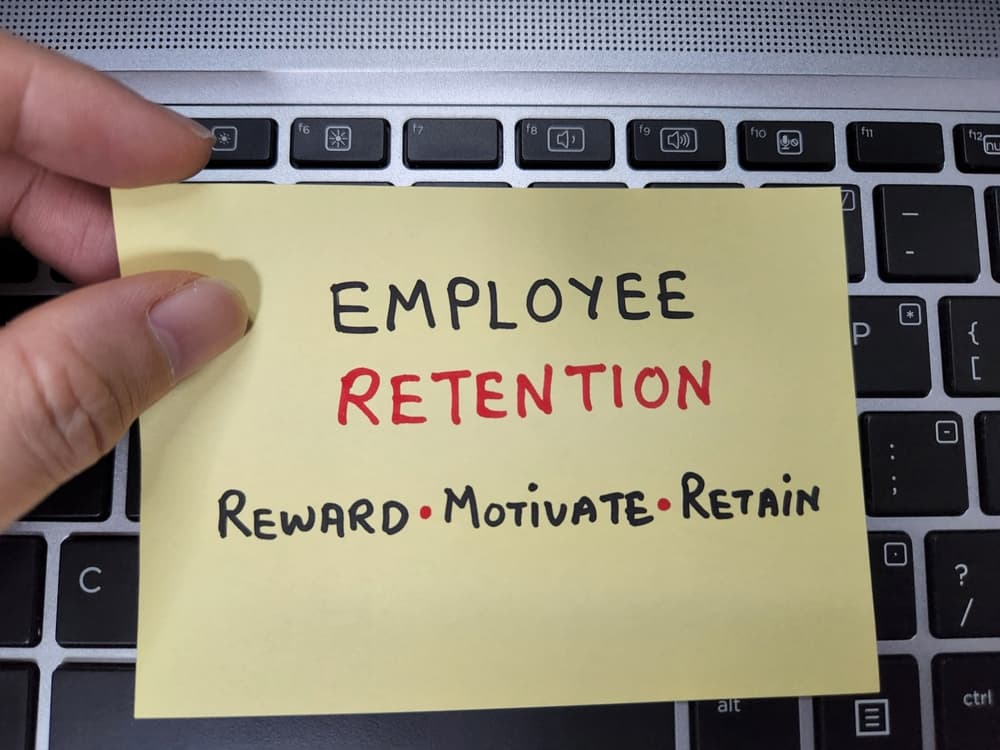Employee retention is a top priority for any organization, regardless of its size, type, or short- and long-term goals. And with a modern workforce that expects more from their employers, organizations are discovering that they need to work harder than ever to retain top talent.
“The Great Resignation” served as a major wake-up call for many employers, leading to renewed interest in practical and effective retention strategies. In this guide, we’ve assembled various ideas for reducing employee turnover, providing you with actionable strategies to build a stronger foundation for your organization.
Effective Strategies for Employee Retention
Over 75% of the reasons employees quit are directly related to issues well within employers’ control. In other words, your organization absolutely has the power to make strides when it comes to the retention of employees.
From refining your hiring process to nurturing employee engagement, here are some key employee retention strategies your organization can implement now that could help improve retention. It is important to remember that each organization is different from the next and retention strategies are not a “one size fits all” solution. (We previously had a blog with this title that is no longer on our site. Can we get that added again and link to it here?)
Recruit the Right Employees
You may be surprised to learn that employee retention begins with recruitment and hiring processes. If you think about what makes a positive, motivating workplace, it makes sense: Your employees want to be around others that share their values, are committed to the organization’s mission, and are dedicated to being a part of the team.
In fact, 80% of employee turnover can be linked to issues with the hiring process – so what better place to start when you are aiming for retention? Using targeted Candidate Experience Studies, your organization can better understand key components such as how you find applicants, how effectively you communicate job opportunities/details, and whether your organization is successfully demonstrating a unique value proposition.
By strengthening your approach to recruitment, you can increase the odds of hiring job candidates that are a perfect match for your organization and improve your recruitment and hiring process.
Create an Exceptional Onboarding Experience
Every employee should be set up for success from day one, beginning with an excellent onboarding experience. Most organizations use onboarding to teach new employees about the job. Still, it is also crucial to provide a detailed perspective on company culture, how your organization supports professional growth, your company’s future, and other situations.
An employee’s onboarding experience can set the tone for their entire tenure at your organization, so it is absolutely worth getting started on the right foot. Evaluating your current onboarding procedures and making strategic improvements can translate into immediate improvements in retention.
Provide Avenues for Professional Development
What are you doing to support your employees’ learning, growth, and development? If your employees are only provided with the most basic of job training, then you are missing a valuable opportunity to uplift engagement, morale, and even creativity, and as a result, you are likely seeing unnecessary turnover of employees that are in search of new challenges.
There is a clear link between supporting career development and reducing turnover, though professional development will look much different from organization to organization. Consider practices such as offering reimbursement for certification programs, industry conferences, and other continuing education, as well as instituting career paths and coaching programs.

Build a Culture That Employees Want to Be Part Of
“Culture” might often be dismissed as just another corporate buzzword, but it is actually an essential component for attracting and retaining talent. Data shows that nearly 80% of people consider a company’s culture before applying for a job there. Nearly half of employees are willing to leave their current job for one that pays less, so long as it has a better company culture.
Cultivating a strong company culture makes a world of difference for your employees, customers, and the organization as a whole.
Get Recognition and Rewards Right
It is no secret that people want to feel appreciated for their work. When an employer consistently demonstrates gratitude, it can significantly impact employee satisfaction and engagement.
There are many different ways to incentivize innovation and performance, from formal rewards systems to other, less structured recognition programs. Even for organizations working with a limited budget, simply showing your thanks with a small, thoughtful gesture can be meaningful to your employees.
Manage With the Goal of Retention
The relationship between managers and employees plays a critical role in workplace satisfaction and is counted among the top reasons employees leave their jobs. And yet, leadership development is frequently placed on the back burner.
Quality leadership requires extensive and ongoing training, ideally customized for your organization. The best leaders act in a coaching role, helping motivate and encourage their employees while providing guidance and actionable feedback. When employees feel supported by a competent leader, they are far more likely to want to remain in their role.
Continuous Feedback on Performance
A once-yearly performance review is no longer sufficient; now, employees want to receive ongoing feedback and support. Make plans to set up more frequent meetings with employees, setting aside time to discuss what they’re doing well, opportunities for growth, and short- and long-term goals.
These consistent “check-ins” can serve as an opportunity for employees to see how they fit into your organization’s future – and vice versa.
Highlight the Importance of Work-Life Balance
A healthy work-life balance is essential to employee satisfaction and your staff’s physical and mental health. It is vital that managers demonstrate an awareness that their employees have full, active lives outside the workplace – and that practices are in place to support balance.
Employees should feel supported in setting clear boundaries that are respected by management. And if situations arise when extra time on the clock is a must, consider how you can compensate employees (like offering them an extra paid day off).
Help Reduce Burnout By Prioritizing Employee Wellness
Burnout is a serious issue across the U.S., with employees reporting physical and emotional side effects such as a lack of energy, negative feelings, and a loss of motivation. In many cases, employees find that the only way to mitigate burnout is to leave their job to eliminate one of the primary sources of stress in their lives.
The good news is that there are many ways your organization can help prevent burnout, thus supporting the health and wellness of your employees. Taking steps such as allowing more flexible working hours and setting clear boundaries are key, as is teaching team leaders how to recognize the signs of burnout. Your organization can go one step further, implementing wellness efforts such as on-site fitness programs, stress reduction support, educational webinars, and more.
Acknowledge Milestones, Both Big and Small
We have talked about recognizing employee performance, but equally beneficial is celebrating notable achievements of all types. From marking the end of a major project to honoring an employee’s five-year anniversary, seize the opportunities to mark special milestones as a team.
Build Employee Engagement
Employee engagement is a topic we could (and have) easily write pages and pages about because there is just so much to say about how to keep employees “tuned in” to your organization and its mission. Ultimately, the best way to enhance engagement is to take the time to listen and understand what employees want, need, think, and feel.
All too often, the onus of responsibility is placed on employees regarding engagement. In reality, it is something that the employer and employees should share. And when your organization invests in the right tactics, it will pay off tenfold.
Get Professional Help with Employee Retention
Of course, improving employee retention is something that can’t be oversimplified into just a single strategy. In reality, supporting employee satisfaction – and thus, reducing turnover – is a complex task.
Work Institute can be your organization’s expert partner, equipping your leadership team with a myriad of practical tools for employee engagement, retention, and related goals. As a leader in our field, we have created in-depth strategies that tap into vital feedback from your employees, implementing carefully-crafted studies to gather relevant information that can be used to develop action plans that deliver measurable, meaningful results.
Together, we can pinpoint how to retain employees at your organization – so you can focus on achieving your business objectives.
Building the Best Team For Your Company
With a diverse range of support services to choose from, Work Institute will develop a tailored plan to align with your organization’s needs and goals. From key talent turnover to leadership issues, our skilled experts are here to help you.
For more information about how our services can be an asset to your organization, contact Work Institute today.
Image Source: Celia Ong, Andrey_Popov / Shutterstock


